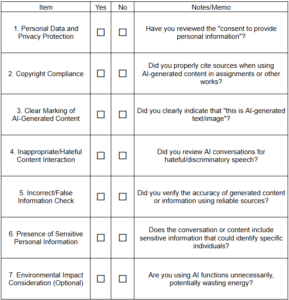The regular use of checklists can be highly effective for habit formation. For example, using a simple checklist like the one below can help ensure ethical principles are not overlooked when using AI:

Ethical Principles Checklist Composition
Checklists should not be created once and forgotten; it’s important to periodically update and supplement them as AI technology advances and new cases emerge.